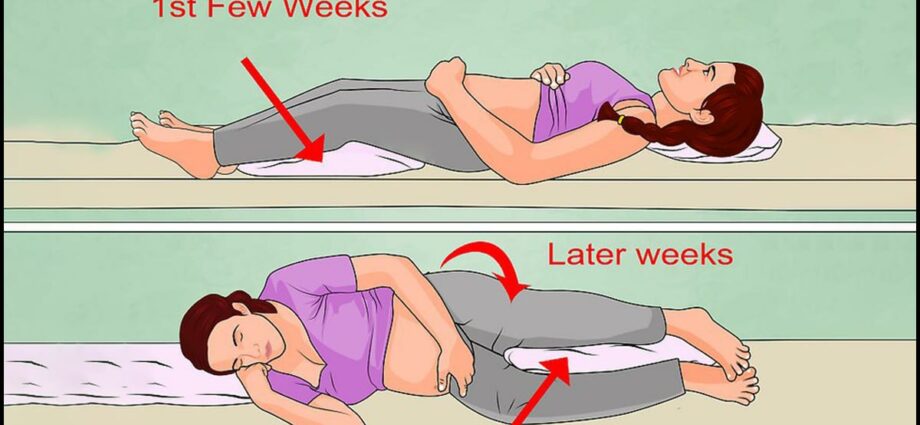Contents
What position to sleep during pregnancy?
Frequent in expectant mothers, sleep disorders tend to worsen over the months. With an increasingly large belly, it becomes more and more difficult to find a comfortable sleeping position.
Is sleeping on your stomach dangerous?
There is no contraindication to sleeping on your stomach. It is not dangerous for the baby: protected by the amniotic fluid, he has no risk of being “crushed” if his mother sleeps on his stomach. Likewise, the umbilical cord is rigid enough not to be compressed, regardless of the position of the mother.
As the weeks go by, with the uterus taking more and more volume and moving up into the abdomen, the position on the stomach quickly becomes uncomfortable. Around 4-5 months of pregnancy, expectant mothers often spontaneously abandon this sleeping position for reasons of comfort.
The best position to sleep well while pregnant
There is not an ideal sleeping position during pregnancy. It is up to each mother-to-be to find her own and adapt it over the months, with the evolution of her body and the baby, who will not hesitate to let her mother know that a position does not suit her. not. The “ideal” position is also the one in which the expectant mother suffers the least from her pregnancy ailments, and in particular low back pain and back pain.
The position on the side, preferably left from the 2nd trimester, is generally the most comfortable. A nursing pillow can add comfort. Arranged along the body and slipped under the knee of the raised upper leg, this long cushion, slightly rounded and filled with micro-beads, in fact relieves the back and stomach. Otherwise, the mother-to-be can use simple pillows or a bolster.
In the event of venous problems and nocturnal cramps, it is advisable to elevate the legs to promote venous return. Future mothers subject to esophageal reflux, for their part, will have every interest in raising their back with a few cushions in order to limit the acid reflux favored by lying down.
Are some positions risky for the baby?
Certain sleeping positions are indeed contraindicated during pregnancy in order to prevent compression of the vena cava (a large vein bringing blood from the lower part of the body to the heart), also called “vena cava syndrome” or “poseiro effect” , which can cause a little discomfort in the mother and have repercussions on the good oxygenation of the baby.
From the 24th WA, in dorsal decubitus, the uterus risks compressing the inferior vena cava and reducing venous return. This can lead to maternal hypotension (resulting in discomfort, dizziness) and decreased uteroplacental perfusion, which in turn can lead to slower fetal heart rate (1).
To prevent this phenomenon, it is recommended that expectant mothers avoid sleeping on their backs and on their right sides. If this happens, do not worry, however: it is usually sufficient to stand on the left side to restore circulation.
When sleep is too disturbed: take a nap
The lack of comfort associated with many other factors – pregnancy ailments (acid reflux, back pain, night cramps, restless legs syndrome), anxieties and nightmares near childbirth – greatly disturbs sleep at the end of pregnancy. However, the mother-to-be needs a restful sleep to bring her pregnancy to a successful conclusion and to gain strength for the day after, when the baby is born.
A nap may be necessary to recover and pay off a sleep debt that may accumulate over the days. Be careful, however, not to do it too late in the afternoon, so as not to encroach on the night’s sleep time.










